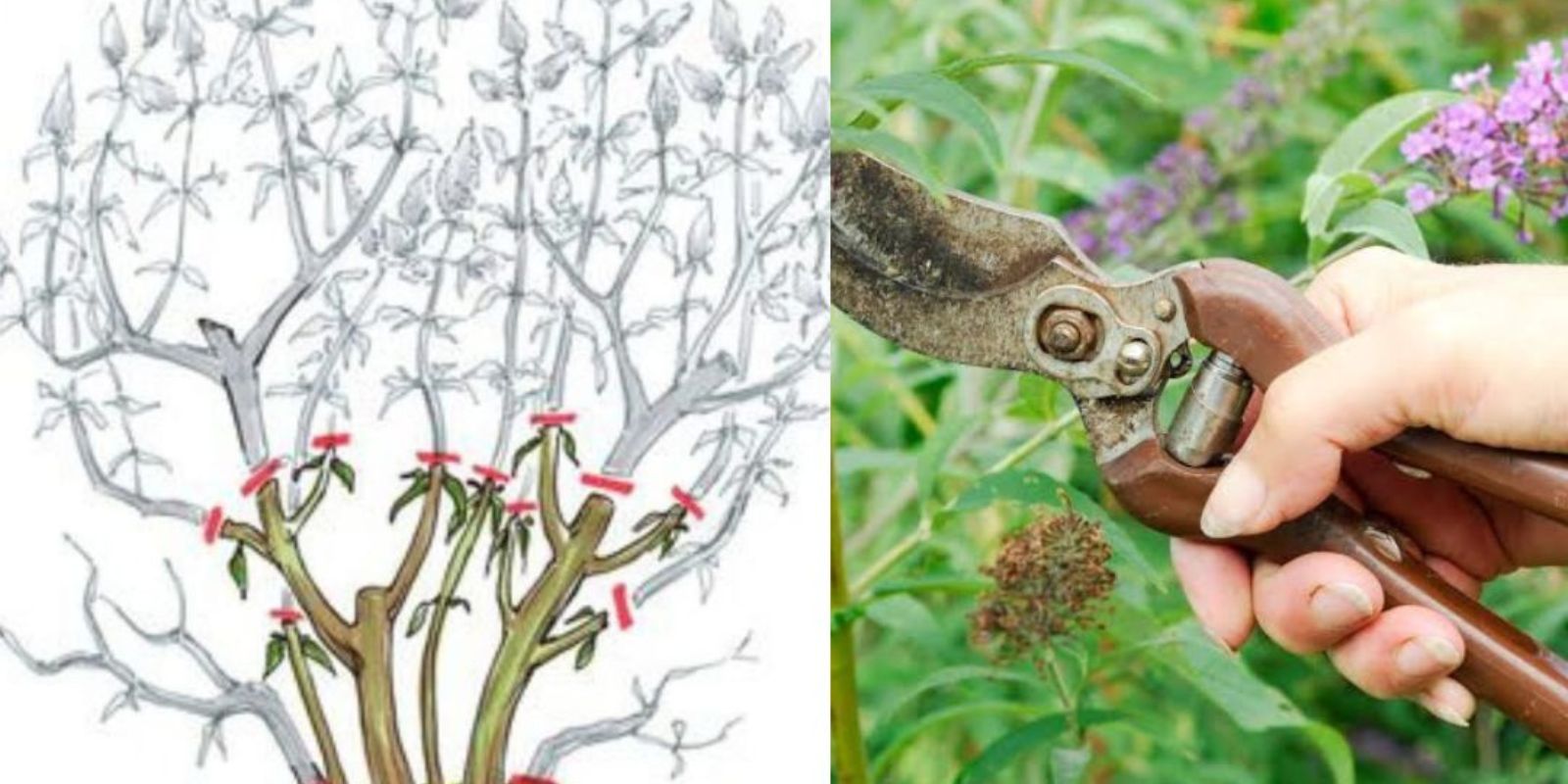Butterfly bushes, or Buddleja, are beloved for their stunning, fragrant flowers that attract pollinators like butterflies and bees. While these shrubs are relatively low-maintenance, proper pruning is crucial to ensure vigorous growth, abundant blooms, and overall plant health. However, many gardeners unknowingly make pruning mistakes that can lead to disappointing results. In this guide, we’ll delve into the biggest pruning errors and how to avoid them to keep your butterfly bushes thriving.
Understanding the Importance of Pruning
Pruning isn’t just about maintaining the shape of your butterfly bush—it plays a vital role in promoting new growth and increasing flower production. Butterfly bushes bloom on new wood, meaning the flowers develop on fresh growth that occurs in the current season. Proper pruning ensures the plant redirects its energy toward producing vibrant flowers instead of supporting old, unproductive branches.
Common Pruning Mistakes to Avoid
1. Pruning at the Wrong Time
Timing is everything when it comes to pruning butterfly bushes. One of the most frequent mistakes is cutting back the plant in the fall or winter. While it might seem logical to clean up the garden at the end of the season, butterfly bushes need their old growth to protect them during cold weather.
Solution:
Prune your butterfly bush in early spring, once the threat of frost has passed and before new growth begins. This timing allows the plant to focus on producing fresh shoots and ensures a spectacular display of flowers in summer.
2. Using Improper Pruning Techniques
Another common error is either pruning too lightly or cutting back too aggressively. Both approaches can harm the plant. A light trim won’t remove enough old wood, which can lead to a bushy, overgrown appearance and fewer flowers. Conversely, cutting too much can stress the plant and limit its ability to regenerate.
Solution:
Use sharp, clean pruning shears to make precise cuts. Remove old and woody growth, leaving only strong, healthy stems. Aim to cut back the plant to about 12–24 inches above the ground, depending on its size and age. This encourages the growth of sturdy, flowering stems.
3. Neglecting Dead and Diseased Wood
Failing to remove dead, damaged, or diseased branches is another critical mistake. These unhealthy parts not only detract from the plant’s appearance but can also spread disease and attract pests, weakening the entire bush.
Solution:
Inspect your butterfly bush carefully and remove any dead or diseased wood at the base. Disinfect your pruning tools between cuts to prevent the spread of pathogens. This practice ensures your bush remains healthy and resilient.
4. Cutting Too Close to the Base
Some gardeners make the mistake of cutting the stems too close to the base of the plant. While butterfly bushes are hardy and can tolerate significant pruning, cutting too low can weaken the plant and slow its recovery.
Solution:
When pruning, leave at least 12–24 inches of stem above the base. This allows the plant to regrow more effectively while maintaining a balanced structure.
5. Ignoring After-Pruning Care
Pruning is just one part of the care process. Neglecting your butterfly bush after pruning can result in poor regrowth and fewer flowers.
Solution:
After pruning, give your butterfly bush plenty of water and apply a balanced fertilizer to replenish nutrients. Mulch around the base of the plant to retain moisture and regulate soil temperature. Regular care after pruning will encourage robust growth and a stunning floral display.
Step-by-Step Guide to Pruning Butterfly Bushes
- Choose the Right Tools:
Use sharp, clean pruning shears or loppers to ensure smooth cuts. Disinfect your tools with rubbing alcohol to prevent the spread of diseases. - Wait for Spring:
Prune in early spring, once the risk of frost has passed and before new growth begins. - Remove Dead and Diseased Branches:
Start by cutting back any dead, damaged, or diseased wood at the base of the plant. - Trim Old Growth:
Cut back old, woody stems to about 12–24 inches above the ground, leaving healthy buds for new growth. - Shape the Bush:
Trim the remaining branches to create a balanced, open structure that allows sunlight and air to reach the center of the plant. - Provide Aftercare:
Water the plant deeply and apply a slow-release fertilizer to promote vigorous growth. - Monitor for Pests and Diseases:
Keep an eye on your butterfly bush throughout the growing season and address any issues promptly.
Additional Tips for Thriving Butterfly Bushes
- Deadhead Regularly: Remove spent blooms during the growing season to encourage continuous flowering.
- Choose the Right Location: Plant your butterfly bush in a sunny spot with well-draining soil.
- Mulch Smartly: Apply a layer of organic mulch around the base of the plant to retain moisture and suppress weeds.
- Prune Annually: Make pruning a regular part of your butterfly bush care routine to maintain its health and productivity.
Why Proper Pruning Matters
Pruning is essential for maintaining the health and beauty of your butterfly bush. By avoiding common mistakes and following best practices, you’ll not only enhance the plant’s appearance but also ensure a vibrant display of flowers that attract pollinators to your garden.
With just a bit of effort and attention, your butterfly bush can become a showstopper in your landscape, delighting you and your garden visitors year after year.
Engage With Us!
What are your favorite tips for keeping butterfly bushes in top shape? Have you made any of these pruning mistakes before? Share your experiences in the comments below!

